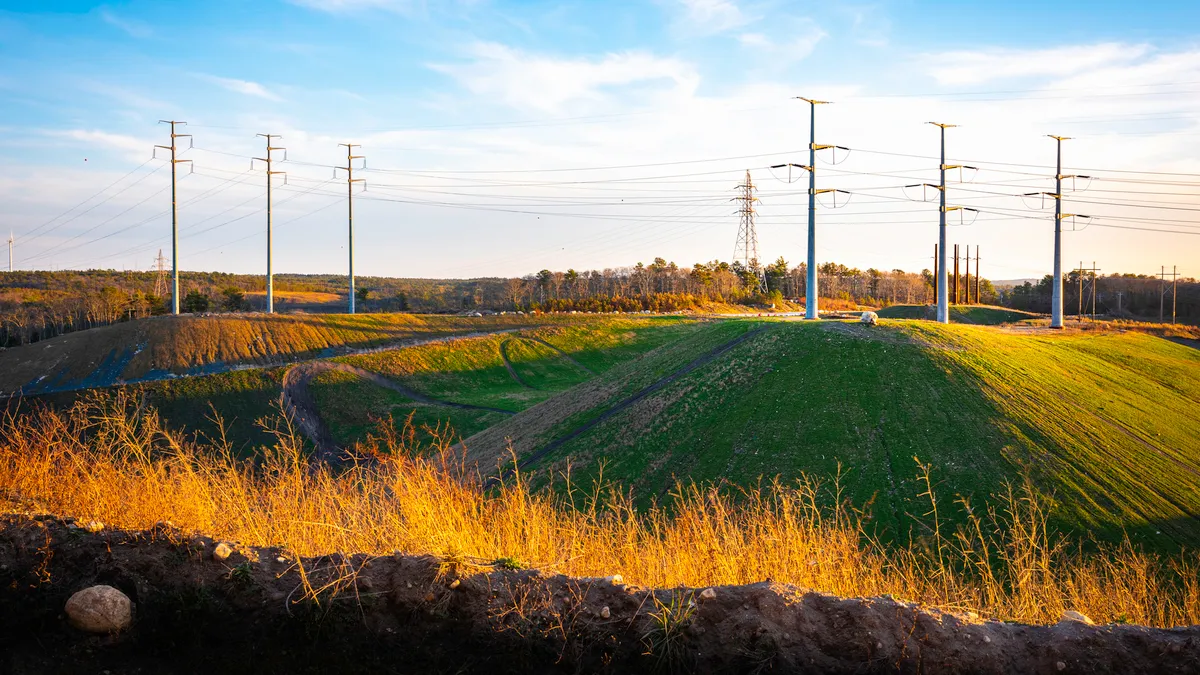Transmission planners and regulators should use “grid enhancing technologies,” or GETs, to quickly increase transmission capacity during the clean energy transition, panelists said Thursday at a WIRES conference in Washington, D.C.
Building out the grid to meet clean energy goals and handle the shift to electric vehicles and homes will require U.S. transmission spending to roughly triple from its current level of around $30 billion a year, according to Terron Hill, National Grid clean energy director.
With transmission projects taking three to 10 years to build, utilities need to optimize their existing assets using GETs, Hill said.
“We have to invest in things like [dynamic line ratings], power flow technologies, digital substations — all of this is needed in order to create that more dynamic grid,” Hill said.
National Grid last week announced it is installing equipment in western New York state so it can use DLR to change the ratings on its power lines in real time, Hill said. Using equipment from LineVision, National Grid expects DLR will allow about 350 MW of wind generation to flow freely across the grid, which will help lower power prices.
Other options for taking full advantage of existing grid infrastructure include advanced conductors, which provide more capacity than traditional power lines; advanced power flow controllers; energy storage and “topology optimization and control,” according to Jay Caspary, a senior consultant in the Department of Energy’s Grid Deployment Office.
“If we're going to get to deep decarbonization quickly on this grid, we've got to use these technologies quickly and find ways to do it,” Caspary said. “There's some huge economic opportunities to use grid-enhancing technologies.”
Bill White, business development director for CTC Global, which makes advanced conductors, called for “rightsizing” new transmission projects by building them with extra capacity to handle future needs.
Vermont Electric Power Co. this year proposed spending an extra $6.4 million on a transmission project to ensure it was capable of reaping future benefits instead of building the project to meet only the utility’s immediate needs, White said. The proposal, though more expensive, had the support of the New England States Committee on Electricity, which represents the region’s governors, he said.
In a memo to ISO New England, NESCOE urged the grid operator to develop guidelines for rightsizing future transmission projects, including those needed to replace aging equipment and meet reliability needs.
Transmission projects need to be built with an eye to the future, Hill said, noting that a lack of transmission, in many cases, is the largest roadblock to getting renewable energy facilities onto the grid.
“Because it takes so much longer for transmission to get built, we really need to start moving away from a ‘let’s size it for the reliability need today [approach],’” Hill said. “We need to start to rightsize for what is that need tomorrow, such that we can get those renewables that are expected on the grid as well as address other issues.”
White urged grid planners and regulators to fully account for the benefits transmission projects can provide. Spending less than 10% more on a project can sharply increase the project’s benefit-to-cost ratio, he said.
“Nickel-and-diming” transmission projects locks in inefficiencies and constraints, he said.
Transmission planning in the U.S. typically focuses on meeting grid reliability standards, but it also provides opportunities to reduce wholesale power prices, according to Hill.
In the United Kingdom, where National Grid also operates, utilities capture 10% of price savings transmission development produces, he said.
Caspary called for incentives to boost transmission development, such as rewarding transmission developers with a share of the savings their projects produce.














